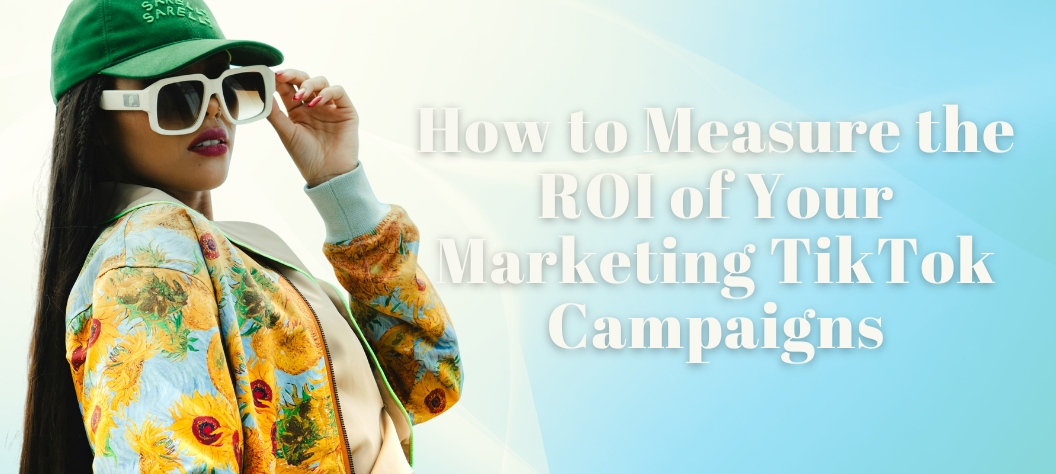TikTok is a marketing game-changer with its vast reach and engaged users. But getting likes and views isn’t enough—you need to prove your campaigns drive real value. Understanding how to track and measure your TikTok marketing ROI helps you make smarter decisions, optimize your spend, and show your success to stakeholders.

Why Measuring TikTok Marketing ROI Matters
Investing in marketing TikTok content can feel exciting and dynamic. Yet, if you can’t clearly demonstrate a positive return on investment (ROI), your budget or strategy might not last. Precise ROI measurement does more than justify spending; it highlights which tactics deliver the most impact, maximizes resource efficiency, and fine-tunes your brand voice.
- Assess performance of organic or paid TikTok campaigns.
- Identify content types or formats with higher engagement and conversions.
- Justify investment to internal teams or leadership.
Without structured analytics, you might waste effort on tactics that don’t support your business goals.
Key Metrics for TikTok Marketing Success
The first step to ROI measurement is identifying what to track. Relying only on surface-level stats like views or followers offers limited insight. Instead, blend these with deeper engagement and business outcomes to reflect true marketing TikTok success.
- Impressions & Reach: Total eyeballs and unique users exposed to your content.
- Engagement Rate: Likes, comments, shares, and video completion rates signal audience interest.
- Click-Through Rate (CTR): How many viewers tapped your link or call-to-action (CTA).
- Conversion Rate: Percentage of viewers who completed a desired action (sign-up, purchase, download).
- Cost Per Acquisition (CPA): Ad spend divided by number of completed conversions.
- Customer Lifetime Value (CLV): The total revenue expected from a customer acquired via TikTok.
- Attribution Metrics: How much credit TikTok deserves in the overall customer journey compared to other channels.
Each metric helps paint a fuller picture of your marketing TikTok impact, linking social traction with bottom-line outcomes.
Setting Realistic Goals for ROI Measurement
Clear goals shape your TikTok marketing strategy and define “return” in your ROI formula. A smart goal framework is crucial for reliable measurement and meaningful insights.
- Make goals specific (e.g., “Increase landing page clicks by 30% in 2 months”).
- Assign measurable values (signups, purchases, app installs).
- Ensure attainability and relevance to your business.
- Set a time-bound window for review.
Sample goals might include growing your email list, increasing online store sales, or driving app downloads from TikTok traffic. Precise objectives make calculating ROI much easier and more transparent.
Tracking Tools for Marketing TikTok Campaigns
To calculate ROI effectively, use tracking solutions that translate your TikTok campaign efforts into actionable data. While TikTok’s own dashboard provides solid analytics, integrating third-party tools paints a more comprehensive picture.
- TikTok Analytics: Shows reach, engagement, follower growth, trending videos, and audience demographics.
- UTM Parameters: Add tracked links (via Google Analytics) to CTAs in your TikTok profile or ad campaigns to follow the full conversion path.
- Pixel Integration: If you run TikTok Ads, use TikTok Pixel on your website to track actions beyond views (cart adds, purchases, registrations).
- CRM Integrations: Sync TikTok-origin leads and customers with your CRM platform for granular ROI analysis over time.
By combining TikTok-native data with external analytics, you’ll attribute ROI more accurately to your marketing TikTok campaign efforts.
Calculating ROI for Your TikTok Marketing
Once you gather your metrics, it’s time to crunch the numbers. The basic ROI formula is:
ROI (%) = [(Value Generated – Cost) / Cost] x 100
Here’s how this works for marketing TikTok campaigns:
- Value Generated: Revenue from TikTok-driven sales or new customer acquisitions within a campaign window.
- Cost: All spend related to the TikTok campaign—ad budget, influencer payments, content creation, and tools.
Example Scenario
Suppose you invested $500 in a month-long TikTok campaign, and you track $2,000 in direct sales from campaign links. Plugging into the formula:
ROI = [($2,000 – $500) / $500] x 100 = 300%
This positive percentage shows a successful campaign, but even a negative ROI helps you optimize for next time.
Breaking Down Revenue Attribution
A common challenge in marketing TikTok measurement is assigning revenue “credit” to TikTok. Not every customer will click your link directly—some may search Google later or come back after a week.
- Last Click Attribution: TikTok only gets credit if it’s the customer’s final action. Simple, but may undervalue TikTok’s role.
- First Click Attribution: All credit goes to TikTok if it’s the user’s first interaction. Useful for top-funnel awareness goals.
- Multi-Touch Attribution: Distributes fractional credit across multiple touchpoints (e.g., a mix of TikTok exposure, email, and direct site visit).
Choose the model that aligns with your campaign type and buy cycle, then analyze ROI accordingly. Multi-touch attribution is ideal if TikTok is part of a broader campaign mix.
Improving Your ROI Tracking Tactics
Even modest adjustments can yield better clarity and accuracy in your marketing TikTok measurement. Consider these proactive steps:
- Use unique discount codes for TikTok viewers to directly attribute purchases.
- Set up custom landing pages exclusive to TikTok campaigns.
- Combine organic and paid insights for a holistic view; not every win is from paid ads.
- Schedule regular reviews to spot trends and outliers in your campaign data.
- Partner with influencers who use trackable links, showcasing their direct impact.
These simple but effective methods help minimize data gaps and tie TikTok engagement to real business results.
Interpreting Your TikTok ROI Results
Calculating marketing TikTok ROI gives you actionable data, but context is key. A campaign with 100% ROI may be a clear win, but analyzing the bigger picture infuses your results with meaning.
- Compare outcomes against original goals.
- Review qualitative data such as comments, sentiment, or community interactions—some value goes beyond numbers.
- Assess sustainability—is your positive ROI consistent or just a one-off spike?
- Factor in downstream impacts, like improved brand awareness or repeat customers acquired through TikTok.
Effective interpretation not only celebrates wins but guides future content strategy and investment.
Common Pitfalls in TikTok Marketing ROI Measurement
Measuring TikTok marketing’s impact isn’t always straightforward. Avoid these frequent mistakes:
- Relying on vanity metrics (likes, views) alone without tracking business goals.
- Overlooking hidden costs (hours spent, production fees, influencers).
- Failing to refresh your UTM links or pixels, leading to tracking gaps.
- Ignoring seasonal or industry fluctuations that can skew ROI benchmarks.
- Setting vague or shifting goalposts that make evaluation arbitrary.
Staying aware of these pitfalls keeps your measurement methodology reliable and trustworthy.
Maximizing ROI in Future TikTok Campaigns
Once you master ROI measurement, apply your learnings to boost future performance:
- Double down on content formats, CTAs, or time slots that drove the strongest ROI.
- Use A/B testing to compare influencers or ad styles before big spends.
- Repurpose top-converting content for ads, organic posts, and cross-channel usage.
- Continuously iterate—TikTok trends move fast, so agility pays off.
By refining your approach with every campaign, you unlock compounding improvements in efficiency and results.
Conclusion
Rigorous ROI measurement empowers smarter decision-making in marketing TikTok campaigns. By tracking the right data and tweaking your strategy, you can maximize your return and showcase real business value. Start today, and let data guide your path to greater TikTok marketing success.



 https://leadspro.ai
https://leadspro.ai